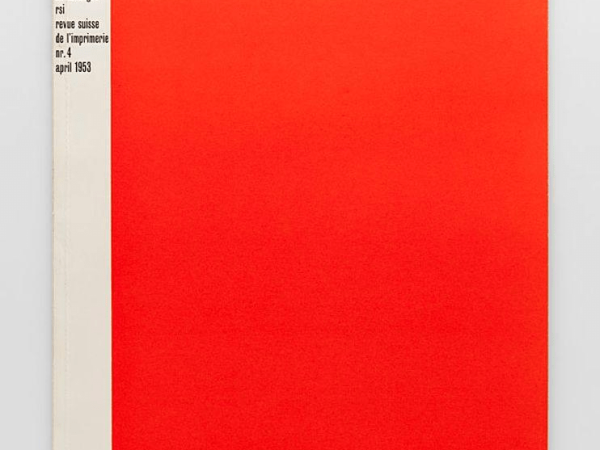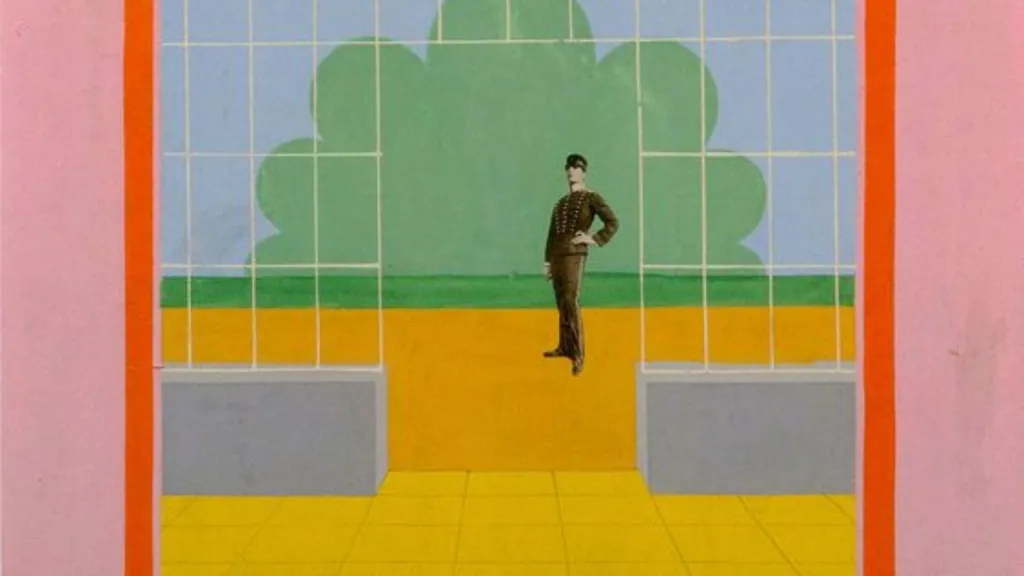
Born Charles Édouard Jeanneret, Swiss-born architect, designer and theorist, Le Corbusier was one of the most influential artistic figures in 20th-century architecture, publisher of the Esprit Nouveau Modernist newspaper in 1920, author of several influential books, including Vers une architecture (1923), L’art décoratif d’aujourd’hui (1925) and Les 5 points d (CIAM). He also coined the principle that ‘a machine for living in’ was the modern home.
Biography
He studied architecture at the local art school after an early career as a watch engraver in the Swiss town of La Chaux de Fonds, winning an award at the 1902 International Exhibition of Modern Decorative Art in Turin, and, after a time of travel, moved to Paris in 1908 to work in the architectural offices of Auguste Perret, a reinforced concrete specialist.
Before World War 1
Le Corbusier went to Berlin in 1910 to work under Peter Behrens, a proto-modernist architect and artist, before returning to his home town in 1912 via Eastern Europe to teach architecture and decorative arts. He devoted his energies to architectural theory from 1914 to 1916, including his ideas for the concrete-structured Dom-ino House, before returning to Paris in 1917. He met and took up painting with the painter Amadée Ozenfant.
Influenced by Cubism
Influenced by the formal elements of Cubism and Futurism’s emphatic spirit of the 20th century, they invented Purism, a clean, pure-formed Modernist aesthetic advocated in their 1918 Après le Cubisme manifesto and followed up in the 1920 to 1925 publication of the journal Esprit Nouveau. Le Corbusier’s ideas about what he saw as the decadence of excessive and inappropriate decoration in the contemporary decorative arts were critically founded in his book L’art décoratif d’aujourd’hui.
1925 Paris Exposition des Arts Décoratifs et Industriels
At the 1925 Paris Exposition des Arts Décoratifs et Industriels, they were realised in physical form in the bright, clearly articulated interiors of his Pavillon de L’Esprit Nouveau, a stark contrast to the decorative exuberance of most of the more commercially focused and trendy pavilions on display. Standardised unit furniture, mass-produced bentwood Thonet chairs, abstract Fernand Léger paintings hung on white, and undecorated walls were included in its modular construction.
In his two apartment buildings at the internationally influential Weissenhof Siedlungen housing exhibition in Stuttgart and the celebrated Villa Savoye of 1929-31, other significant visual and spatial characteristics underpinned by his theoretical premises were also seen.
Collaboration with Jeanneret and Charlotte Perriand
During this time, he turned to modern furniture design, working closely with his cousins, Pierre Jeanneret and Charlotte Perriand, whom Le Corbusier’s writings had highly inspired.
Her practical design knowledge and understanding of materials such as tubular steel were valuable for translating Le Corbusier’s design concepts into material objects. This was exemplified by late 1920s designs such as the B301 Grand Confort armchair, the B302 swivel chair, and the B306 Chaise-Longue that combined leather or skin upholstery with tubular steel frames and were first developed by Thonet.


Further demonstrations of his designs for contemporary interiors and furniture or ‘Equipment for Living’ were seen at the 1929 Salon d’Automne, where the three worked on a new apartment proposal. At the Building Trades Exhibition in London in 1930, Le Corbusier became a French citizen. They also displayed a plywood exhibition stand for the Venesta plywood firm. However, this commission marked the end of Le Corbusier’s association with furniture design.
Joined UAM
He joined the Union des Artistes Modernes (UAM) 1930, a radical group of designers founded in the previous year to respond to the Société des Artistes Décorateurs’ conservatism. He dedicated his energy to architecture from the 1930s. He was active in urban planning ventures and the realisation of his housing estate, the Unité d’Habitation block of flats in Marseilles, between 1947 and 1952. This building marked a fundamental change from its streamlined ‘machine age’ forms of the 1920s and early 1930s, finished in rugged concrete, utilising expressive elements of colour and sculptural shape.

Other architectural projects
The Chapel of Notre-Dame-du-Haut in Ronchamp (1950-5), the planning of Chandigarh’s city in India, and the Monastery of Sainte-Marie-de-la-Torette at Evreux (1957-60) were other notable later architectural projects. Le Corbusier also carried out tapestry designs for the Law Courts at Chandigarh and the UNESCO building in Paris in the mid-1950s. His (and Perriand and Jeanneret’s) furniture designs have continued to be replicated by the Italian furniture company Cassina since the mid-1960s. They have taken their place as 20th-century design classics.
Sources
Byars, M., & Riley, T. (2004). The design encyclopedia. Laurence King Publishing.
Woodham, J. M. (2006). A dictionary of modern design. Oxford University Press.
More Swiss Designers
Swiss Graphic Design and its Impact on Decorative and Applied Arts
Swiss graphic design, rooted in principles like grid systems and minimalism, has profoundly influenced global aesthetics, blending functionality and artistic beauty across various media.
Keep readingPierre Gauchat: Pioneer of Swiss Graphic Design
Pierre Gauchat (1902–1956), a Swiss graphic designer, influenced 20th-century design with his clarity and functionality, notable for iconic posters, logos, and initiating design competitions.
Keep readingKurt Aepli: Swiss Silversmith and Design Innovator
Kurt Aepli was a prominent Swiss silversmith and educator, known for modernist designs and his influence on 20th-century decorative arts, teaching from 1945 to 1980.
Keep readingDafi Kühne: Master of Letterpress and Graphic Design
Dafi Kühne is a Swiss poster designer and educator known for blending contemporary design with traditional letterpress techniques, creating innovative works that inspire appreciation for craftsmanship.
Keep readingA Masterpiece of Craftsmanship: The Bentwood Chair by Beat Frank
The enduring bentwood chair by Beat Frank, acquired by the Swiss National Museum in 2021, showcases traditional craftsmanship and sustainable design, celebrating cultural and artistic value.
Keep readingWilhelm Kienzle: Mastering Minimalism and Functionality through the Iconic Safari Chair
Wilhelm Kienzle, a pioneering Swiss designer of the 20th century, is renowned for his iconic safari chairs, reflecting minimalism, functionality, and enduring craftsmanship.
Keep readingKuhn Rikon Piranha Y Peeler: Marrying Functionality with Swiss Precision
The Kuhn Rikon Piranha Y Peeler combines Swiss precision and ergonomic design, featuring a sharp blade for efficient peeling and a vibrant, space-efficient design.
Keep readingIntroduction to the Iconic Landi Chair
The Landi Chair, designed by Hans Coray in 1938, epitomizes functional beauty and embodies the functionalist movement, influencing modern design.
Keep readingEmil Ruder: A Pillar of Swiss Typography and Design
Emil Ruder, a pioneer of Swiss Style, shaped modern typography with his innovative grid system, emphasis on communication, and enduring manual. His legacy inspires designers today.
Keep readingSwiss School: The International Typographic Style
The Swiss School, or International Typographic Style, emerged in the 1950s from Switzerland and Germany. It emphasized visual unity, objectivity, and clarity in design, leaving a lasting influence.
Keep readingMichel Charlot: Fusing Efficiency and Elegance in Industrial Design
Michel Charlot, a prominent figure in industrial design, applies efficiency and elegance in his work. His collaborations and academic contributions solidify his influential position.
Keep readingMax Ernst Haefeli (1901-1976) – Swiss Architect and Designer
Max Ernst Haefeli (1901-1976) was a Swiss architect and designer born in Zurich. He worked in the Otto Bartning studio in Berlin between 1923-24.
Keep readingMattia Bonetti (b. 1953) Blurring Boundaries between Art and Design
Mattia Bonetti, a celebrated designer and artist, is known for whimsical furniture designs with a distinct art-meets-design style, as seen in global collections.
Keep readingHermann Obrist (1862-1927), Swiss Sculptor and Designer
Hermann Obrist was a Swiss sculptor and designer. He was most active in Germany. A leading figure in the evolution of Jugendstil in Munich, Obrist was inspired by the Arts and Crafts Movement, which he had experienced when he visited Britain in 1897.
Keep readingMax Bill Swiss Designer, Educator & Author – Sculptor
Max Bill (1908-1994) was a Swiss artist, architect, and designer known for his elegant sculptures and influential work in concrete art. His legacy spans disciplines and continents.
Keep readingJean Dunand: A Master of Sculpture, Metalwork, and Lacquer Artistry
Jean Dunand is a Swiss sculptor, metalworker, and artisan. He was born in 1877 in La Chaux-de-Fonds and died on the 27th of December 1942.
Keep readingWilliam Lescaze: International Style Innovator and Creative Polymath
William Lescaze, a pioneering Swiss architect, made a lasting impact in architecture, design, furniture, and painting, inspiring generations with innovation and versatility.
Keep readingHans Gugelot: Influential German Designer and Braun Consultant
Hans Gugelot, a key figure in German postwar reconstruction, was a versatile designer known for functional and influential products, such as the Carousel-S Slide Projector for Kodak.
Keep readingKurt Thut (1931 – 2011) Swiss Designer and Manufacturer
Kurt Thut (b. 1931-2011) was born in Möriken, Switzerland. In his father’s workshop, while attending the School of Art and Design in Zurich, Thut improved his carpentry skills.
Keep readingMario Botta (b.1943) Swiss Architect and Designer
Mario Botta, a Swiss architect and designer known for his solid geometric sensibility, has created notable structures like the SFMOMA and religious works. He also designed furniture.
Keep readingAlpine Eagle XL Chrono – Design Classic 🥇
The Alpine Eagle collection of sporty-chic timepieces stretches its wings, embracing a flyback chronograph in a new 44 mm diameter case for the first time. The Alpine Eagle XL Chrono clock with the integrated bracelet is inspired by the might of the eagle and the beauty of the Alps, as is the complete series.
Keep readingHannes Wettstein (1958 – 2008) Swiss Furniture Designer
He started to work for Cassina in 1994 with his Juno bed, and some more recent projects were presented in 2003. Since 1991 he also taught; he was a lecturer at the ETH of Zurich and taught at the Hochschule fur Gestaltung in Karlsruhe.
Keep readingThe Timeless Beauty of Penguin Book Covers by Jan Tschichold
Jan Tschichold, a renowned typographer, revolutionized book cover design for Penguin Books in the 1930s, emphasizing simplicity and balance. His influence persists in modern graphic design.
Keep readingWolfgang Weingart – Swiss Typographer and Designer
He was dubbed “the father” of New Wave or Swiss Punk typography . LEARN MORE
Keep readingJan Tschichold (1902 – 1974) – Swiss Typographer
German-born, Tschichold is one of the most outstanding and influential typographers of the 20th century, He cleared away the old typography of pre-1925 and made room for a modern, structured and regulated new typography. His work is characterised by rigorous structure, asymmetrical placement of contrasting elements, and layouts based on horizontal and vertical underlying grids.
Keep readingCarl J. Jucker (1902 – 1997) Swiss Metalworker
Carl J.Jucker was a metal worker from Switzerland. He studied at the Kunstgewerbeschule, Zürich, from 1918-1922. He studied under Muche between 1922 and 1923. He studied at Bauhaus with Christian Dell, Paul Klee and László Moholy-Nagy.
Keep readingSigfried Giedion (1888 – 1968) – Swiss art historian and designer
Sigfried Giedion (1888-1968) was a Swiss art historian and designer. He was born in Prague.
Keep readingMarianne Straub Swiss Weaver and Designer
Marianne Straub, Swiss designer and weaver, trained in Switzerland and Britain, made significant advances in fabric design and production. She influenced textile design education and industry.
Keep readingGertrud Preiswerk 🇨🇭 Swiss Textile Designer
Gertrud Preiswerk, a Swiss textile designer from Basel, trained at Bauhaus and co-founded SPH Stoffe in Zurich, collaborating with Wohnbedarf until 1933.
Keep readingHerbert Matter: The Swiss Designer and Photographer
Herbert Matter, a Swiss Designer and Photographer, had a prolific career in the United States, working with influential artists and institutions. He left a lasting legacy.
Keep readingHélène de Mandrot (1867 – 1948) Swiss Designer and Arts Patron
She was a wealthy lady with cultural aspirations, who spent her time travelling between the great cultural centres and fashionable holiday resorts of Europe, and who liked to gather artists and authors around her.
Keep readingDesign Classic – Swiss Army Knife
The Swiss Army Knife, every schoolboy’s dream, was first manufactured in the late nineteenth century. The knife is more than a simple pen knife, with its distinctive bright red body bearing the trademark white cross: it is a compact household tool kit.
Keep readingFritz Haller (1924 – 2012) Swiss Architect, Designer & Town Planner
In Switzerland and Rotterdam, he worked as an apprentice and collaborator with Willem van Tijen and H.A. Maaskant. He founded an architecture firm in Solothurn in 1949. He was a guest professor at the University of Southern California in Los Angeles from 1966 to 1971.
Keep readingAlbert Frey (1903 – 1998) and Desert Modernism
Albert Frey, a pioneer of “desert modernism” in Palm Springs, synthesized American and modernist architecture. His legacy continues today with iconic structures.
Keep readingExploring the Innovative Design of Prop Shelves
Prop is a minimalist shelving system designed by Lausanne-based studio BIG-GAME for Karimoku New Standard. It features L-shaped side modules for stability and stylish functionality.
Keep readingXanti Schawinsky influential Swiss Designer
Alexander Schawinsky was a Swiss designer born in Basel. He studied painting and architecture in Zürich, Cologne, and Berlin. He was at the Bauhaus in Germany between 1924 and 1925.
Keep readingMichel Péclard, Stool, 1955. Beech and Birch
Michel Péclard, stool, 1955. Beech and birch. Made by Horgen-Glarus, Switzerland, from 1926 the firm produced wood furniture and they furnished the Swiss Pavillion, 1929-30.
Keep readingGustave-Louis Jaulmes: Swiss Architect and Designer
Gustave-Louis Jaulmes (1873 – 1959) was a Swiss architect and designer. He was born in Lausanne. He was professionally active in Paris.
Keep readingRelated Articles
Discover more from Encyclopedia of Design
Subscribe to get the latest posts sent to your email.





































